The scenery in Banff is definitely amazing and worth the trip to see the great outdoors. The one challenge is that Canada is usually expensive to fly to — one pro tip would be to price it as two one-way trips to check if it is cheaper. Usually, you can save a few bucks that way. Alyssa, from the dining site Eats Abroad, recently went and here are some of her tips.
If you would like to write about your recent travel experiences on The Flight Deal, submit your pitch here.
====
The Canadian Rockies offer some of the most stunning scenery in the world, and fortunately for those of us living in the U.S., it’s fairly easy to get to. Banff National Park is Canada’s oldest and most visited national park, and from there, it’s an easy drive to several other jaw-dropping national parks: Jasper, Kootenay, and Yoho. Each destination has its own character and special natural features, so they’re all worth a visit if time allows. Whether you’re a diehard backcountry camper and hiker, or someone who simply enjoys snapping selfies during a casual stroll around a lake, there’s something for everyone.
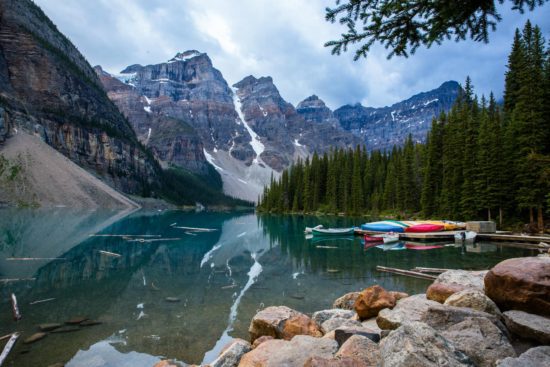
Moraine Lake, Banff National Park, Alberta, Canada – Photo: (c) 2016 – Stephen Tang & Alyssa Kim of Eats Abroad
Getting Around and Other Key Tips:
The closest airport to Banff is Calgary International Airport, located 1.5-hour drive away. While there are buses that can take you directly from the airport to Banff, your best bet is to rent a car from the airport so that you’re the master of your own itinerary. All major international car rental companies operate out of Calgary Airport’s on-site Car Rental Centre, and several other smaller-name rental companies can be found off-site.
If you’re looking to do a wide range of outdoor activities, you’ll want to visit the Rockies in the summer. Although the national parks are open year-round, certain roads and viewpoints start closing in the fall and won’t reopen until late spring. Winter is another prime season, given the area’s three major ski resorts: Sunshine Village, Norquay, and Lake Louise. For travelers coming to the Rockies specifically to ski or snowboard, there are shuttles available to Norquay, Lake Louise, and Sunshine Village resorts from various hotels in Banff and Lake Louise, so you technically could get by without renting a car.
The national parks in the Canadian Rockies charge a daily entrance fee of $19.60 CAD for a family in one vehicle (for solo travelers, the entrance fee is $9.80 CAD), and the fee includes same-day access to multiple national parks. Access to the attractions listed below are included in the entrance fee, unless otherwise noted. If your group plans on visiting the national parks for more than seven days, it’s worth buying the Discovery Pass for $136.40 CAD, which allows a group of up to seven people to get into nearly 100 of Canada’s national parks, marine conservation areas, and historic sites for two years. If you’re thinking of visiting in 2017, you’re in luck: admission fees to all national parks in Canada will be waived to celebrate the 150th anniversary of Canadian Confederation (fees will still apply for services such as camping, hot springs, reservations, etc.). Campsites can be reserved at all of the Canadian Rockies national parks for the summer, and campers should book well in advance.
A fun game to play in the national parks is finding the random pairs of “Red Chairs” scattered throughout. They’re usually tucked away and off the beaten path, and they offer unique views.
Practical Information:
Most businesses in Calgary and the Rockies are credit card-friendly, so don’t forget your foreign transaction fee-free card. Some places will also accept U.S. dollars, but it’s wise to withdraw Canadian dollars from an ATM just to be safe.
English and French are Canada’s official languages, but English is the dominant language in Alberta. Canada goes by the metric system, so all road signs will be in kilometers.
Weather:
Being a mountainous region, the weather can change quickly and drastically, and given the massive area of these parks, the weather in one part of the park can be very different from another. Follow the weather closely and try to be flexible with your schedule so that you can view the top attractions when they’re at their most beautiful. The Canadian Rockies are nearly synonymous with the brilliant teal and emerald lakes, “colored” that way by the rock flour found in the glacial water that runs into these bodies of water. However, visit one of them during dark, drizzly conditions, and you might be left a little disappointed.
July is typically the warmest month at Banff National Park, with an average high in the high 60s to low 70s. In January – the coldest month on average – the high hovers around the high teens to low 20s.
Where to Go:
Banff National Park
The resort town of Banff itself is not that large (1.52 square miles), making it very pedestrian-friendly. It exudes a charming, laid-back mountain town feel with plenty of restaurants, souvenir shops, and galleries. From downtown, you can catch a shuttle bus that takes you to the popular Banff Gondola ($49 CAD per adult, $25 CAD per kid ages 6-15, free for kids 5 and under). The 8-minute gondola ride takes visitors to the summit of Sulphur Mountain, where you’re treated to a 360-degree-view of six mountain ranges. It’s a great and convenient option for those who want that million-dollar view without having to work too hard for it.
About 40 minutes northwest of the town of Banff sits Lake Louise (both the town and the actual lake). One of Banff National Park’s most photographed attractions, the lake is world famous for its stunning glacier backdrop and turquoise water. Kayaks and canoes are available to rent.
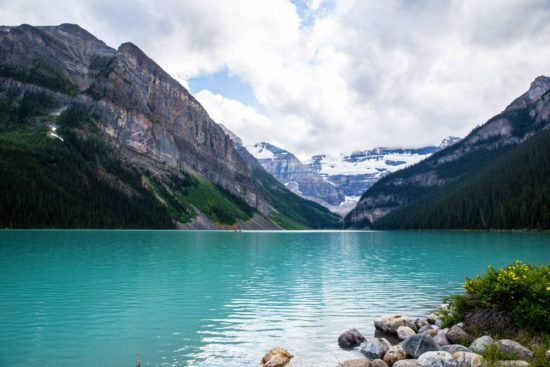
Lake Louise, Alberta, Canada – Photo: (c) 2016 – Stephen Tang & Alyssa Kim of Eats Abroad
There are about 20 officially marked trails in and around Lake Louise that are perfect for day hikes. One notable trail is the Plain of Six Glaciers, which starts right by the lake. This 6.5-mile roundtrip hike is slightly less crowded than the shorter and more traveled Lake Agnes trail, and as the name suggests, you’re treated to views of such glaciers as Lefroy and Victoria along the way. At the end of the hike is a rustic Swiss chalet-style teahouse, where hikers can rest their legs and refuel. There’s no electricity at the teahouse, so all of the food is prepared on a propane stove. We enjoyed slices of chocolate cake, apple pie, and two cups of the special Plain of Six Glaciers tea blend, created by Banff Tea Co., before making our way back down.
Moraine Lake – located just less than nine miles southeast of Lake Louise – is another iconic sight at Banff National Park. On a sunny day, the still, bright blue water shimmers and reflects the trees and mountains surrounding the lake. We arrived in the early evening and there were only a couple of other visitors there, so it was a beautiful, tranquil moment for us. We didn’t have time to do any hikes, but keep in mind there are several trails here.
Jasper National Park
North of Banff is Jasper National Park, Canada’s second most visited national park and the largest in the Canadian Rockies at 4,200 square miles. Needless to say, it’s a massive haven for nature lovers, and like Banff National Park, you could easily spend your entire vacation in Jasper alone.
Highway 93 – better known as Icefields Parkway –connects Lake Louise to Jasper, and the 143-mile drive offers breathtaking scenery and a number of natural features worth pulling over for. We checked out Athabasca Glacier, one of the main highlights along the Parkway in Jasper National Park, just under a 2-hour drive from Lake Louise. We took a guided 3-hour icewalk tour ($85 CAD per person) that allowed us to hike on the glacier, peer into crevasses, sip pure glacier water, and learn about how the glacier’s formation has changed over time. If you’ve never been on a glacier before, this is a great and easily accessible option (Parks Canada says Athabasca is the most visited glacier in North America).
About an hour north of Athabasca Glacier is the popular Athabasca Falls, known for the force of its waters. The surrounding scenery is spectacular, and though it can be extremely crowded in the summer, foot traffic flows well and there are a bunch of different viewing platforms available. Like the rest of Jasper National Park, wildlife isn’t lacking at Athabasca Falls; we saw a black bear feeding not too far away from us.
For thrill seekers looking to cliff dive, visit Horseshoe Lake off of the Icefields Parkway, about 2.6 miles north of Athabasca Falls. There are no signs for it, but on a hot summer day, you’ll easily figure out its location when you see cars parked bumper to bumper alongside the road (we weren’t even looking for this lake, but were curious why so many people were stopping here). The lake itself is hidden from the Parkway, and it’s a favorite destination for locals. We didn’t have our swimsuits (and I can’t even swim), but it was fun watching the divers plunge into the dark turquoise water.

Athabasca Falls, Jasper National Park, Alberta, Canada – Photo: (c) 2016 – Stephen Tang & Alyssa Kim of Eats Abroad
Yoho National Park
About an hour’s drive west from downtown Banff, Yoho is one of two Canadian Rockies national parks located in British Columbia. You’ll notice significantly smaller crowds here than at Banff, which can be a welcome relief if you were hoping to become one with nature on your trip. Emerald Lake is a main attraction at Yoho, and on the afternoon we visited, it truly lived up to its name; it was hard to believe that a lake could be that beautifully, vibrantly green.
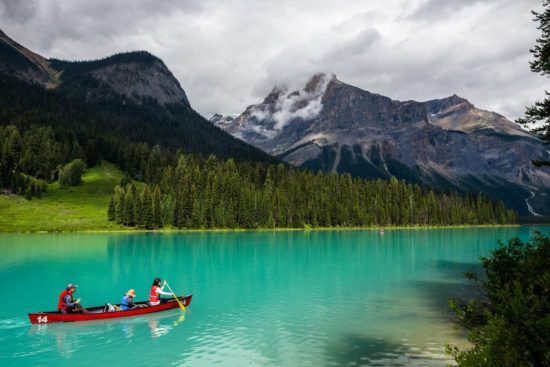
Emerald Lake, Yoho National Park, Alberta, Canada – Photo: (c) 2016 – Stephen Tang & Alyssa Kim of Eats Abroad
Takakkaw Falls is another sight not to be missed. It’s the third highest waterfall in Canada, and visitors can get close enough to the base of the fall to get sprayed by the mist. To access the waterfall, visitors must drive on Yoho Valley Road, which is only open to vehicles from mid-June to mid-October (it becomes a trail for experienced skiers the rest of the year).
Kootenay National Park
Kootenay is located south of Yoho and west of Banff. Though it receives fewer visitors than Banff, Jasper, and Yoho, Kootenay is worth a day trip for Marble Canyon alone. The swirling aquamarine waters of Tokumm Creek and the jagged canyon walls here are striking, and the burnt remnants from two major fires in 2003 make the landscape all the more dramatic. The trail itself features wooden bridges (that amazingly survived the fires) that let visitors look down into the gorge.
A great way to unwind after a day of activity is soaking in the natural mineral pools at Radium Hot Springs (Banff and Jasper National Parks have their own hot springs, too). Open year-round, Radium’s large hot pool is surrounded by trees and canyon walls, and there’s also a cold outdoor swimming pool. The waters here have natural minerals such as sulfate, calcium, and bicarbonate, and the temperature is kept between 98 and 104 degrees Fahrenheit. If you really want to indulge, there are massages and other spa services you can book.
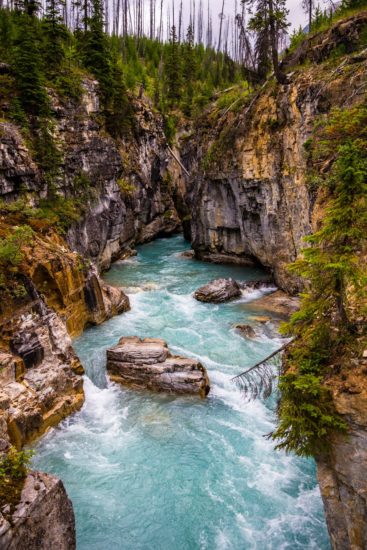
Tokumm Creek, Yoho National Park, Canada – Photo: (c) 2016 – Stephen Tang & Alyssa Kim of Eats Abroad
About the Author:
Alyssa Kim runs the dining site Eats Abroad, which aims to give travelers the best, most reliable dining recommendations in cities worldwide by featuring suggestions directly from renowned chefs and food experts. Her love of travel started as a child when her dad drove the family on road trips around the country, while her passion for food and dining was developed during her years of living in New York City. Alyssa has lived in major cities in the Midwest and East and West Coasts and has traveled throughout Europe while living in London for a year. Follow Eats Abroad on Facebook, Twitter, and Instagram.
=====
To make sure you receive our latest deals, LIKE our The Flight Deal Facebook Page, follow us on Twitter @TheFlightDeal, Threads @TheFlightDeal or The Flight Deal WhatsApp channel or subscribe to The Flight Deal RSS Feed or Subscribe via Email (Once a Day)
The Flight Deal does not sell travel products or services. We provide you with information about third-party travel suppliers’ offers, and link you to their sites. The information posted by The Flight Deal is valid at the time of publication. However, we have no control over the suppliers, and we therefore do not warrant or guarantee that their offers will not change or become unavailable. Nor are we responsible for their products, services or site content. Please see their sites for their most up-to-date offer information and all applicable terms and conditions.
Sign up to receive The Flight Deal Daily DealsLetter, to stay up to date with the latest and greatest flight deals available.

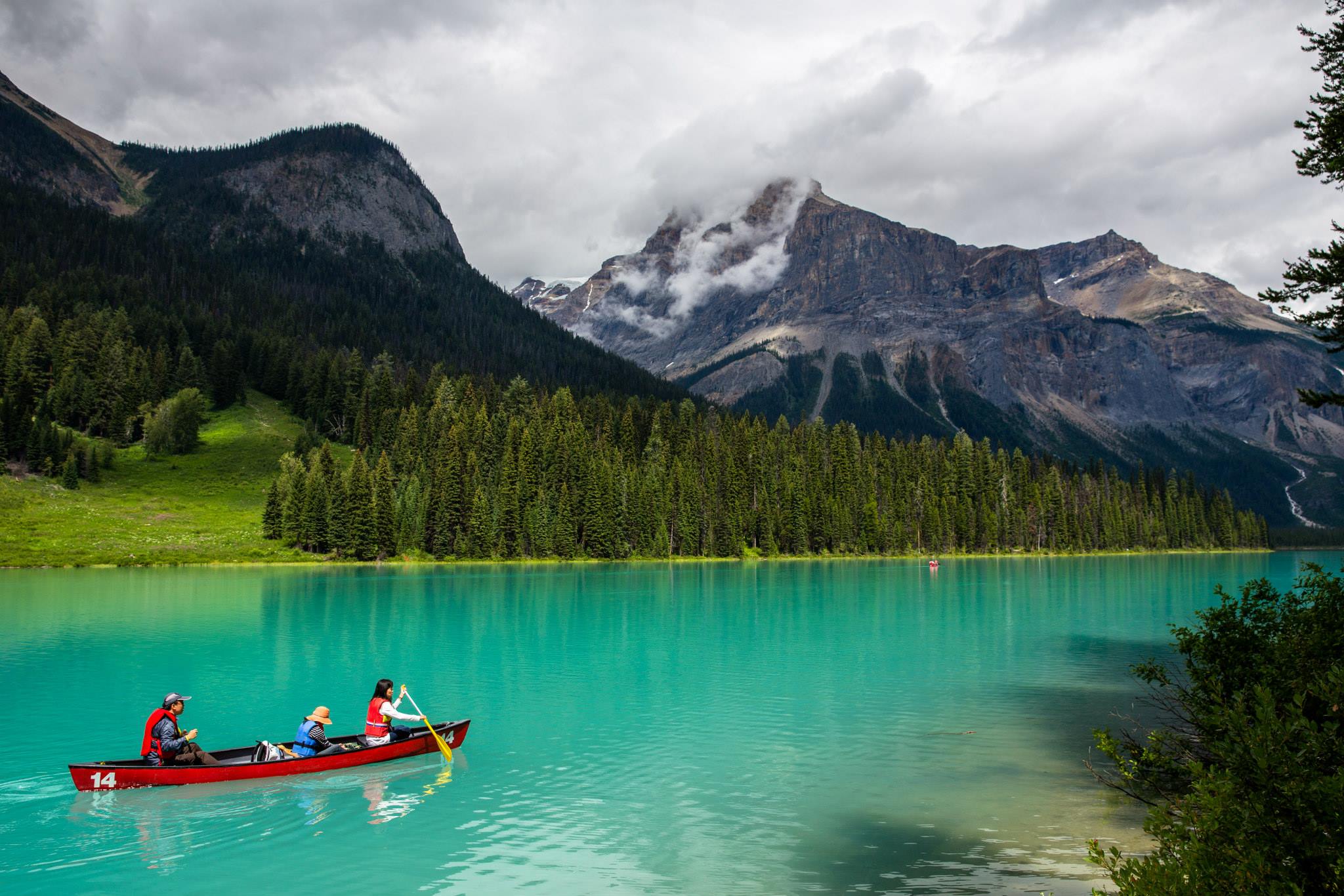
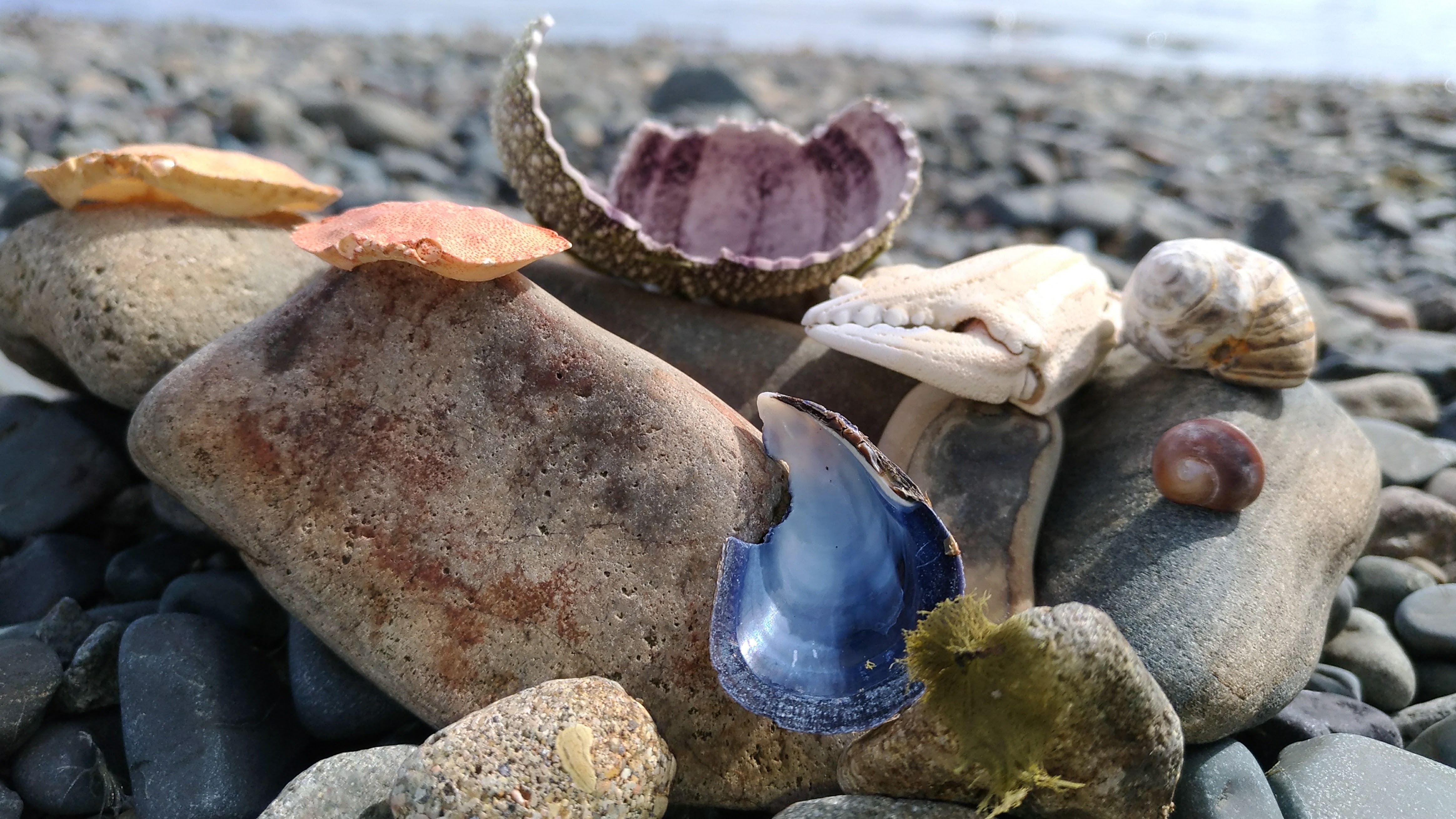
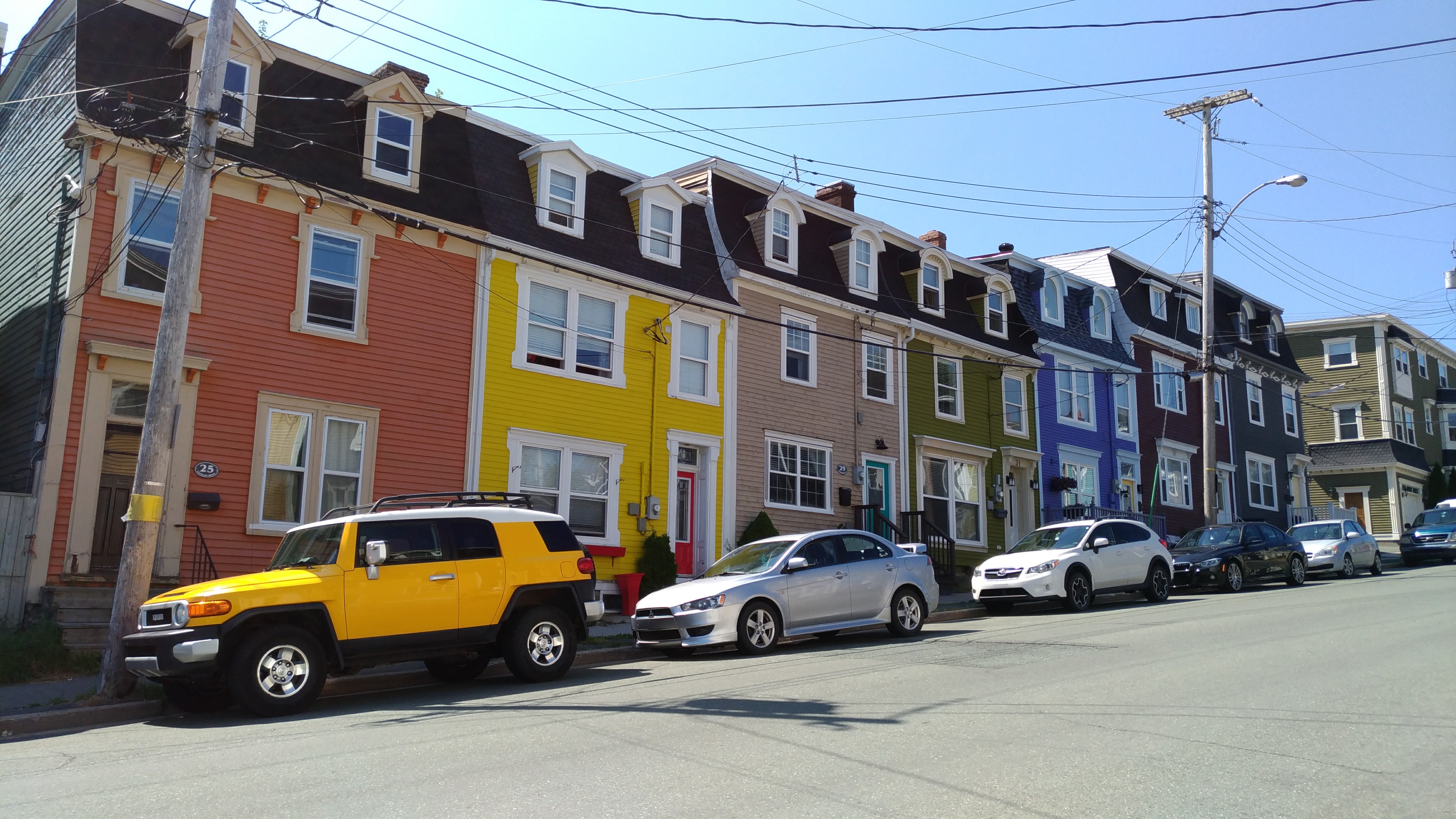
No Comments